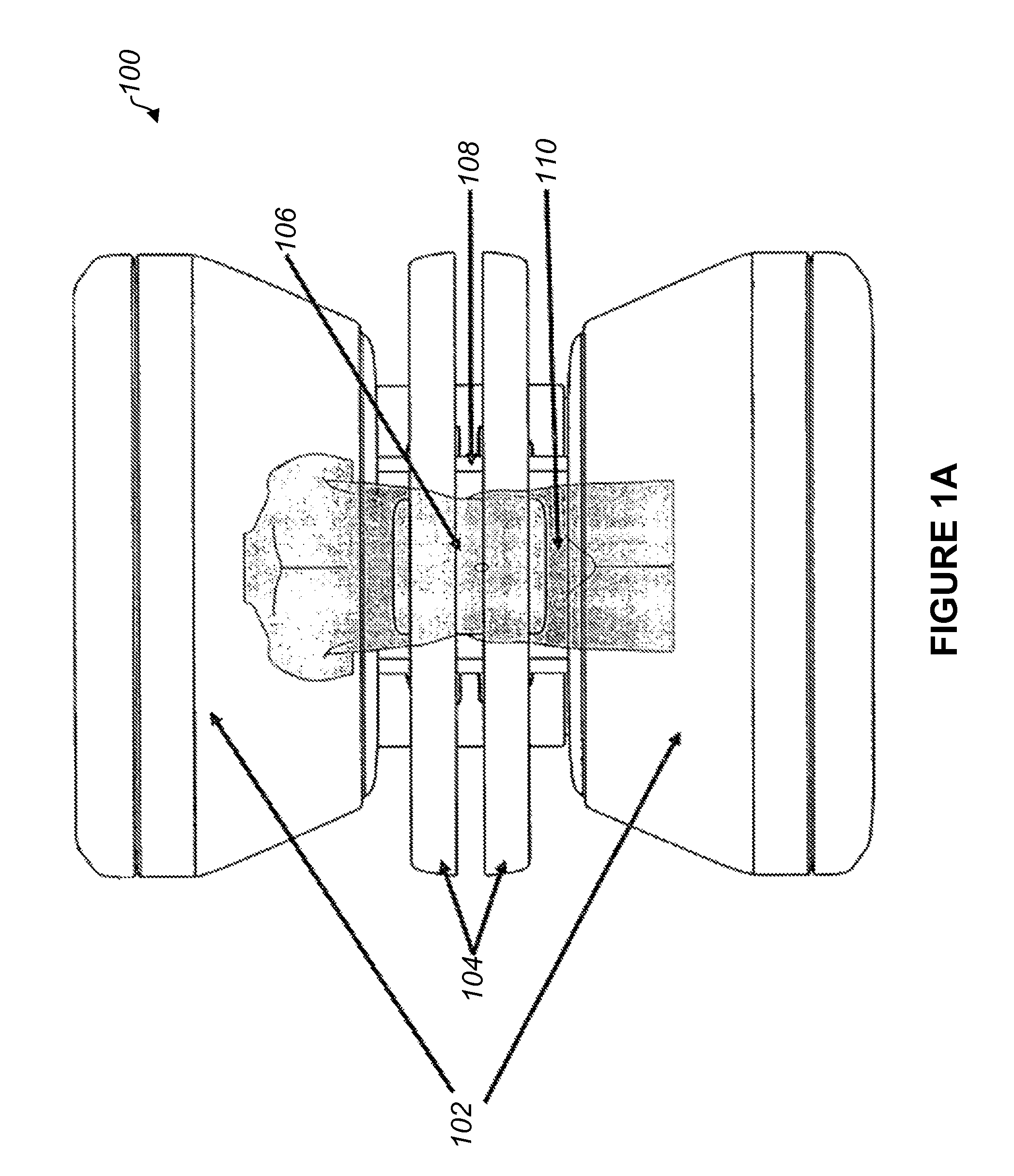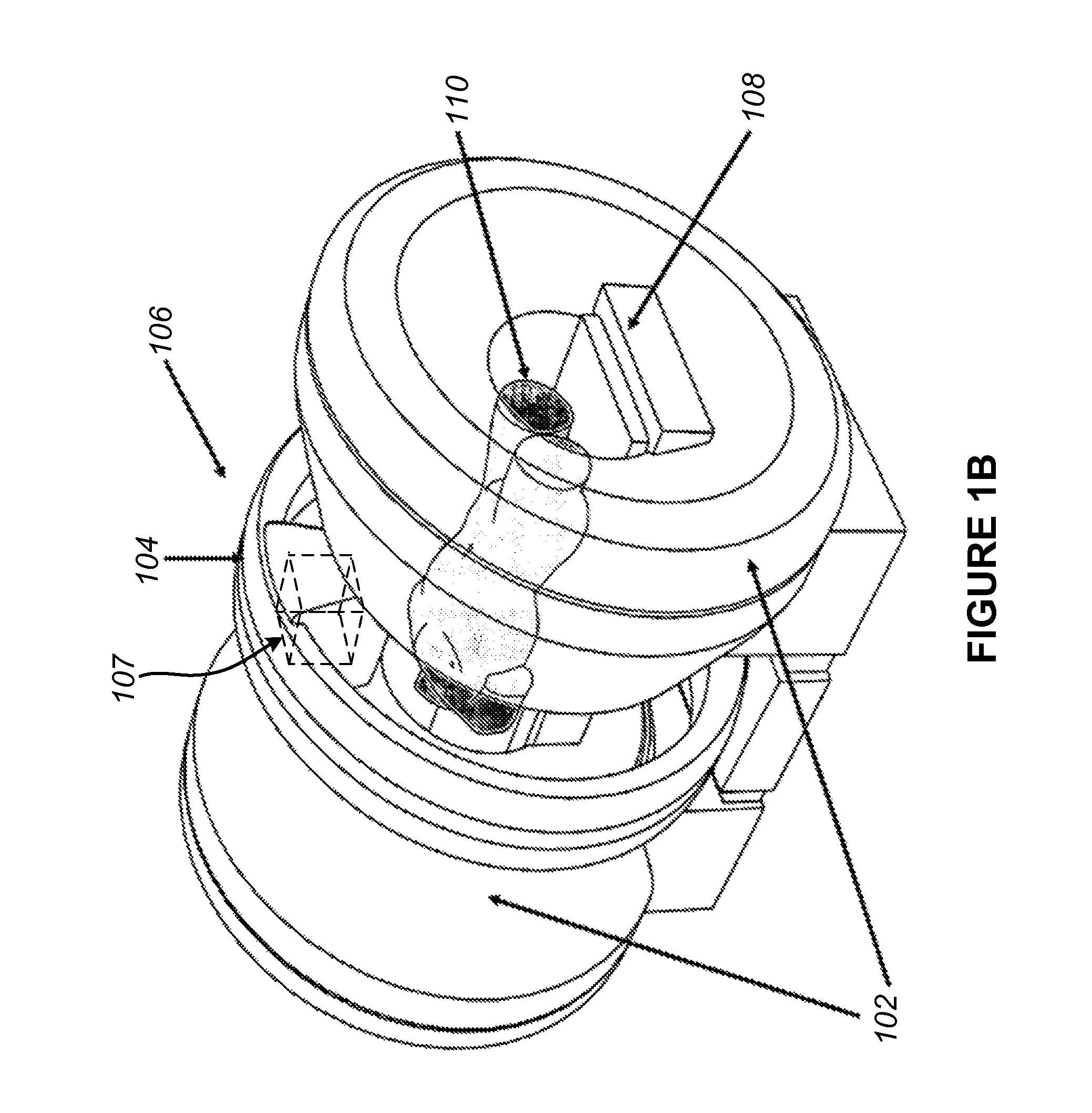Method and apparatus for shielding a linear accelerator and a magnetic resonance imaging device from each other
a linear accelerator and magnetic resonance imaging technology, applied in the field of combined radiotherapy and magnetic resonance imaging, can solve the problems of signal corruption or even damage to the mri electronics, interference with the radiofrequency transmitter, and the extremely sensitive rf frequency transmit and (especially) receive coil employed
- Summary
- Abstract
- Description
- Claims
- Application Information
AI Technical Summary
Benefits of technology
Problems solved by technology
Method used
Image
Examples
Embodiment Construction
[0038]FIGS. 1A-1E show various views of a split-magnet radiation therapy system 100. FIGS. 1A and 1B show plan and perspective views, respectively, of a split-magnet radiation therapy system 100. The system 100 includes an integrated linear accelerator 107 and MRI system 102, and allows for simultaneous irradiation from the linear accelerator 107 and imaging from the MRI 102. For example, the MRI 102 can be used to pinpoint the location of an object to be irradiated, and this information can be used to control the irradiation from the linear accelerator 107. The present disclosure is not necessarily limited to the specific MRI and linac systems shown in the Figures and referenced herein, but can apply equally to other MRI and linac systems. For example, RF and / or magnetic shielding systems and methods disclosed herein can be used with known MRI and linac systems that may differ from those shown in the Figures and described below.
[0039]The radiation therapy system 100 includes an ope...
PUM
 Login to View More
Login to View More Abstract
Description
Claims
Application Information
 Login to View More
Login to View More - R&D
- Intellectual Property
- Life Sciences
- Materials
- Tech Scout
- Unparalleled Data Quality
- Higher Quality Content
- 60% Fewer Hallucinations
Browse by: Latest US Patents, China's latest patents, Technical Efficacy Thesaurus, Application Domain, Technology Topic, Popular Technical Reports.
© 2025 PatSnap. All rights reserved.Legal|Privacy policy|Modern Slavery Act Transparency Statement|Sitemap|About US| Contact US: help@patsnap.com



